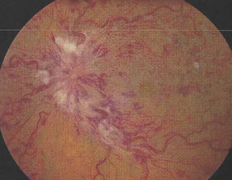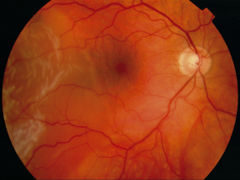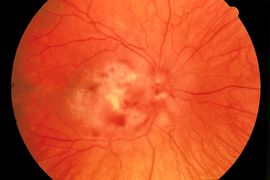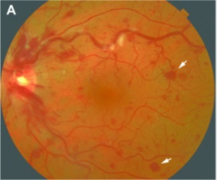We need you! Join our contributor community and become a WikEM editor through our open and transparent promotion process.
Acute onset flashers and floaters
From WikEM
(Redirected from Acute-Onset Floaters and Flashes)
Contents
Background
- Floaters
- A sensation of gray or dark spots moving in the visual field
- Caused either by light bending at the interface of fluid pockets in the vitreous jelly or cells located within the vitreous
- May persist for months to years
- Flashes
- Monocular, repeated, brief flashes of white light in the peripheral visual field
- related to traction on the peripheral retina from areas of tightly adherent vitreous jelly
Differential Diagnosis
Acute onset flashers and floaters
- Ocular causes
- Floaters and/or flashes
- Posterior Vitreous Detachment
- Retinal tear or Retinal Detachment
- Posterior Uveitis
- Predominantly floaters
- Vitreous Hemorrhage secondary to proliferative retinopathy
- Sympathetic ophthalmia
- Predominantly flashes
- Oculodigital stimulation
- Rapid eye movements
- Neovascular age-related macular degeneration
- Floaters and/or flashes
- Nonocular causes
- Migraine aura (classic)
- Migraine aura (acephalgicmigraine)
- Occipital lobe disorders
- Postural hypotension
Evaluation
- Eye exam
- Stress on:
- Visual acuity
- Visual field confrontation test
- Direct ophthalmoscopy
- Slit lamp
- Stress on:
Images
Open-angle glaucoma (cupping)
Roth spots due to retinal vein occlusion (retinal hemorrhage)
Management
Referral of patients with presumed posterior vitreous detachment
| Clinical Assessment | Disposition |
|---|---|
|
|
|
|
|
|
|
|
|
|
See Also
References
- Hollands H, Johnson D, Brox AC, Almeida D, Simel DL, Sharma S. Acute-Onset Floaters and Flashes: is this patient at risk for retinal detachment? JAMA. 2009;302(20):2243-2249.





